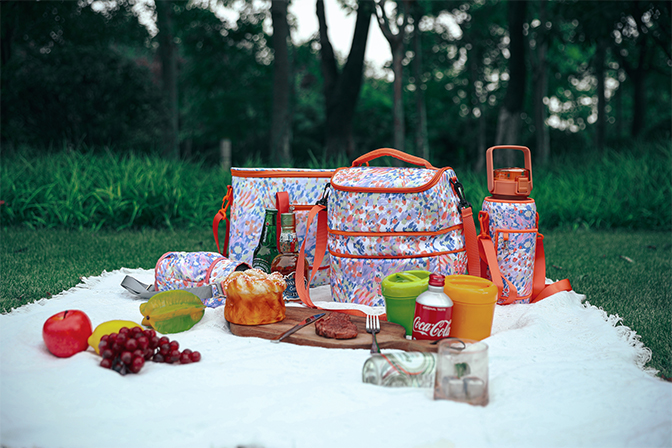
Cooler boxes function based on the straightforward yet efficient concept of insulation. Their construction incorporates materials in the walls that are adept at reducing heat exchange, thus preserving the coolness inside. This insulation acts as a shield, blocking the external heat from affecting the items inside.
These boxes employ different types of cooling mediums, such as ice packs or ice cubes, to keep the temperatures down. These mediums work by absorbing and then releasing heat, ensuring the contents stay cool. The effectiveness of these cooling mediums plays a crucial role in the cooler box’s performance.
These cooler boxes depend solely on their insulation and the cooling mediums used, making them perfect for brief excursions or events. They are a favorite for picnics and single-day activities where electricity is not accessible.
On the other hand, electric cooler boxes are equipped with an electrical cooling system. They are more suited for extended trips or scenarios requiring continuous cooling, like camping or road trips.
The ease of transporting cooler boxes makes them ideal for carrying perishables during outdoor activities such as hiking, camping, and visits to the beach.
Cooler boxes are essential for keeping food and drinks fresh during outdoor adventures, thanks to their robustness and insulation capabilities.
Despite needing electricity, electric cooler boxes are designed to be energy-efficient. Many modern versions include features that conserve energy, appealing to those prioritizing eco-friendly options.
A cooler box’s performance is largely determined by its insulation quality. High-quality insulation means better temperature maintenance and extended freshness.
The surrounding temperature significantly impacts a cooler box’s effectiveness. High external temperatures can test the limits of even the best coolers, making it important to consider the environment when planning.
The way items are packed in a cooler can affect its efficiency. Organized packing, aiming to reduce air spaces and placing items thoughtfully, can improve performance.
Pre-cooling items before placing them in the cooler can help keep temperatures low for longer, particularly for items that need to remain very cold.
Opening the cooler too often lets in warm air, raising the internal temperature. Keeping the lid closed as much as possible helps maintain the coolness.
Distributing ice packs or cubes evenly across the cooler ensures consistent cooling, avoiding hot spots and keeping the temperature uniformly low.
It’s important to regularly inspect the cooler for any signs of damage or wear in the insulation, repairing or replacing parts as necessary to keep it functioning well.
After each use, it’s crucial to clean and thoroughly dry the cooler to prevent mold growth and protect the insulation’s integrity.

